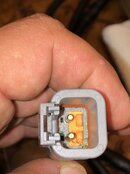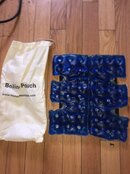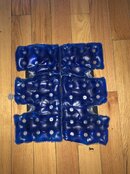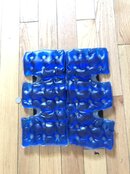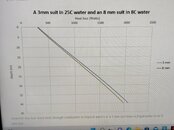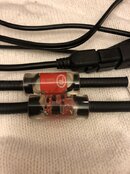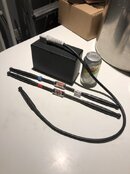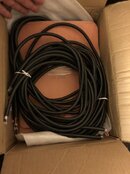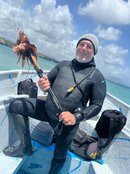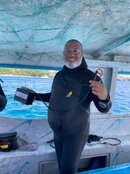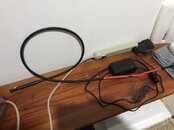The back boot is filled with silicone sealant and the internal air cavities are filled with dielectric silicone grease, and yes everything is heat shrinked. The DT are good for use on land but since salt water and electricity are so corrosive it's better to use a beefier pin and socket since that will be the failure point (usually the pin), the DTP uses the same pin and socket as the E/O, solid brass gold plated, they cost about $1 each. The internal seal on the DTP works just as good or better than the DT seals but because they have seals, they must be greased with a little silicone grease before each dive. I have had no issues with these connectors they are waterproof at any depth and look like new after every dive, just like the E/O. I still clean all the connectors including the E/O after I finish diving.
You are using an out of date browser. It may not display this or other websites correctly.
You should upgrade or use an alternative browser.
You should upgrade or use an alternative browser.
Wet suit heating system prototype with modular design (photos included)
- Thread starter Scuba-guy
- Start date
Please register or login
Welcome to ScubaBoard, the world's largest scuba diving community. Registration is not required to read the forums, but we encourage you to join. Joining has its benefits and enables you to participate in the discussions.
Benefits of registering include
- Ability to post and comment on topics and discussions.
- A Free photo gallery to share your dive photos with the world.
- You can make this box go away
Sounds like a solid setup. Might not be life-support reliable but having the power source external and manually disconnectable is the saving grace. Not enough power to burn or electrocute you before you can react to it. Would not want a self contained system inside the suit no matter how solid, guys have been hurt that way! What’s the chemistry of the chemical heat pack though? What’s it going to do to your skin when it ruptures? Not saying it’s a bad idea but you should know that.
I use reusable heat packs the type that has to be boiled in water to be reused and has a metal snap activator inside. It is filled with nontoxic food grade liquid that turns solid when activated. I alternate use, sometimes with and sometimes without the pack but the pack is more comfortable to wear than 5 lbs. more lead negative weight and adds about 50-100 watt hours equivalent to the systems total power. The heat pack turns from liquid to solid when activated (in use) so if it ruptures it wont leak the material will be trapped in its container.
This is the chemical pack, and it weighs 5lbs. The system with this pack is about 3/4 inch thick. So, it will be sitting between your wetsuit and your vest. The pack is 2 parts and conforms to your body shape and takes 1 hour to recharge by "cooking" it on the stove. The pack sits on top of the electric pad's insulating side (black) the orange side is facing the body on the electric pad, there is also thermal compound (CPU,LED,ect) sandwiched between the heating element and the insulator.
Attachments
I promised to update, any improvements, so here it is
1. upgraded power by 10% from 70 watts to 77.
2. New wetsuit Oniel heat 2022 4/3
3. New charger and changing cable
I really must say this thing is AWESOME and a real game changer, especially for old divers like me lol, I now I can out perform even the youngest and strongest diver masters and instructors. It has improved my air consumption, and comfort level as well as my energy level. I no longer feel exhausted after diving, and it has also reduced the effects of nitrogen narcosis. I regularly dive to 130-150 ft on air, the big ones like to live in that zone. If you have any questions, please feel free to ask.
1. upgraded power by 10% from 70 watts to 77.
2. New wetsuit Oniel heat 2022 4/3
3. New charger and changing cable
I really must say this thing is AWESOME and a real game changer, especially for old divers like me lol, I now I can out perform even the youngest and strongest diver masters and instructors. It has improved my air consumption, and comfort level as well as my energy level. I no longer feel exhausted after diving, and it has also reduced the effects of nitrogen narcosis. I regularly dive to 130-150 ft on air, the big ones like to live in that zone. If you have any questions, please feel free to ask.
Attachments
Similar threads
- Replies
- 82
- Views
- 4,190
- Replies
- 3
- Views
- 427



